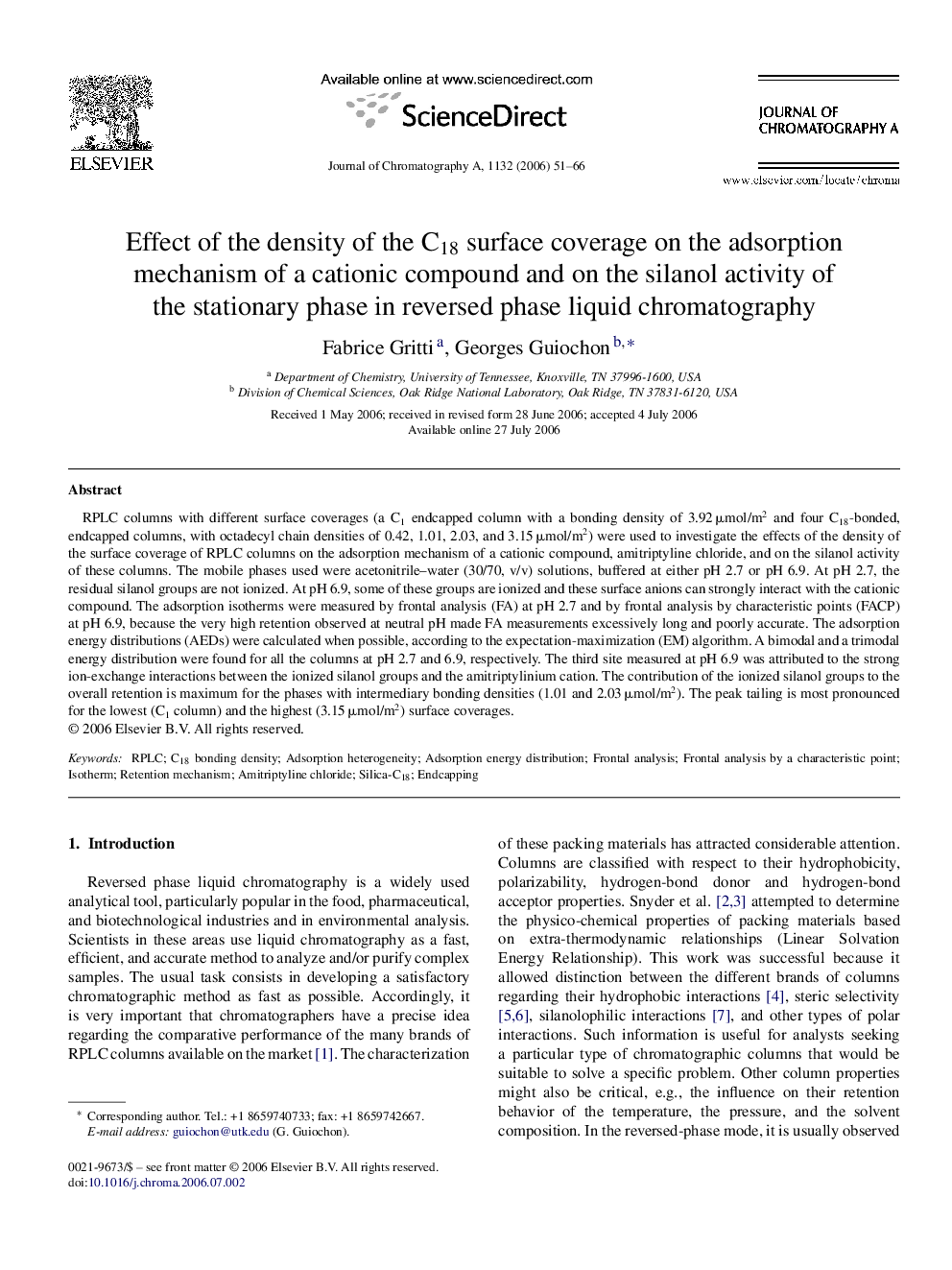| کد مقاله | کد نشریه | سال انتشار | مقاله انگلیسی | نسخه تمام متن |
|---|---|---|---|---|
| 1209574 | 1493759 | 2006 | 16 صفحه PDF | دانلود رایگان |

RPLC columns with different surface coverages (a C1 endcapped column with a bonding density of 3.92 μmol/m2 and four C18-bonded, endcapped columns, with octadecyl chain densities of 0.42, 1.01, 2.03, and 3.15 μmol/m2) were used to investigate the effects of the density of the surface coverage of RPLC columns on the adsorption mechanism of a cationic compound, amitriptyline chloride, and on the silanol activity of these columns. The mobile phases used were acetonitrile–water (30/70, v/v) solutions, buffered at either pH 2.7 or pH 6.9. At pH 2.7, the residual silanol groups are not ionized. At pH 6.9, some of these groups are ionized and these surface anions can strongly interact with the cationic compound. The adsorption isotherms were measured by frontal analysis (FA) at pH 2.7 and by frontal analysis by characteristic points (FACP) at pH 6.9, because the very high retention observed at neutral pH made FA measurements excessively long and poorly accurate. The adsorption energy distributions (AEDs) were calculated when possible, according to the expectation-maximization (EM) algorithm. A bimodal and a trimodal energy distribution were found for all the columns at pH 2.7 and 6.9, respectively. The third site measured at pH 6.9 was attributed to the strong ion-exchange interactions between the ionized silanol groups and the amitriptylinium cation. The contribution of the ionized silanol groups to the overall retention is maximum for the phases with intermediary bonding densities (1.01 and 2.03 μmol/m2). The peak tailing is most pronounced for the lowest (C1 column) and the highest (3.15 μmol/m2) surface coverages.
Journal: Journal of Chromatography A - Volume 1132, Issues 1–2, 3 November 2006, Pages 51–66